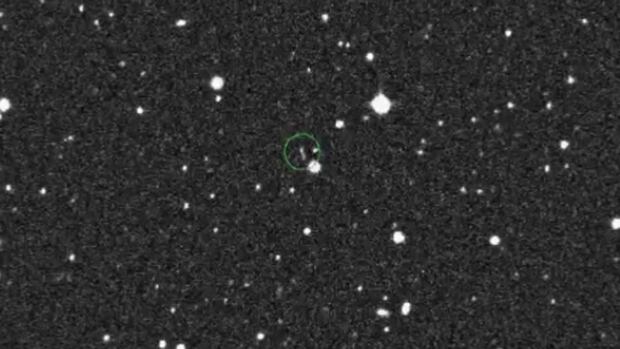Earth has captured a new mini-moon

Earth has a tiny new companion in its journey around the sun — at least for now.
The new “mini-moon” is an asteroid called 2020 CD3. It’s about 1.9 to 3.5 metres in diameter, roughly between the size of a cow and a hippopotamus.
It was confirmed to have been captured and “temporarily bound to Earth” by the International Astronomical Union’s Minor Planet Centre at the Smithsonian Astronomical Observatory on Tuesday. The organization is responsible for the designation of minor bodies in the solar system.
The asteroid was discovered by Kacper Wierzchos and Theodore Prune, astronomers with the Catalina Sky Survey, on Feb. 15, Wierzchos said in a tweet that described it as “big news.”
BIG NEWS (thread 1/3). Earth has a new temporarily captured object/Possible mini-moon called 2020 CD3. On the night of Feb. 15, my Catalina Sky Survey teammate Teddy Pruyne and I found a 20th magnitude object. Here are the discovery images. <a href=”https://t.co/zLkXyGAkZl”>pic.twitter.com/zLkXyGAkZl</a>
—@WierzchosKacper
The Catalina Sky Survey is a NASA-funded project based at the University of Arizona that catalogues potentially hazardous asteroids.
“It’s a big deal as out of ~1 million known asteroids, this is just the second asteroid known to orbit Earth,” Wierzchos said.
(3/3) The object has a diameter between 1.9 – 3.5 m assuming a C-type asteroid albedo. But it’s a big deal as out of ~ 1 million known asteroids, this is just the second asteroid known to orbit Earth (after 2006 RH120, which was also discovered by the Catalina Sky Survey).
—@WierzchosKacper
The first was 2006 RH120, also found by the Catalina Sky Survey, which most recently orbited Earth between Sept. 2006 and June 2007. It has since resumed orbiting the sun.
The reason mini-moons orbit Earth for such a short time — compared to the moon, which has been orbiting Earth for more than four billion years — is that they’re pulled by the Earth’s, the moon’s and the sun’s gravity at the same time, producing irregular orbits.
(2/3) The object has just been announced by the MPC and its orbit shows that it entered Earth’s orbit some three years ago. Here is a diagram of the orbit created with the orbit simulator written by Tony Dunn: <a href=”https://t.co/2wsJGtexiO”>pic.twitter.com/2wsJGtexiO</a>
—@WierzchosKacper
At some point, the sun’s gravity will win, and the object will break free from its orbit around Earth.
However, so far, astronomers estimate that 2020 CD3 has already been orbiting the Earth for about three years.
Even though mini-moons are rarely discovered, a University of Hawaii study in 2011 calculated that there should be at least one asteroid with a diameter of at least one metre orbiting Earth at any given time. On average, such a mini-moon would orbit Earth for nine months, but some could orbit for decades, it estimated.





